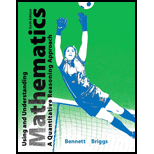
Using and Understanding Mathematics: A Quantitative Reasoning Approach (6th Edition)
6th Edition
ISBN: 9780321914620
Author: Jeffrey O. Bennett, William L. Briggs
Publisher: PEARSON
expand_more
expand_more
format_list_bulleted
Concept explainers
Textbook Question
Chapter 1.E, Problem 1QQ
"If you want to save the social services that would be lost with a property tax reduction, then vote against Proposition C." Based on this quote, a vote for Proposition C presumably means that
a. you favor an increase in property taxes.
b. you favor a decrease in property taxes.
c. you support social services.
Expert Solution & Answer
Trending nowThis is a popular solution!

Students have asked these similar questions
State A and state B are each candidates for an extra congressional representative. The relative unfairness of apportionment for state A is approximately 0.35, whereas for state B it is about 0.348. According to the apportionment principle, which of the two states should receive a new representative? Explain why.
State A, because it has the larger relative unfairness.
State A, because it has the smaller relative unfairness.
State B, because it has the larger relative unfairness.
State B, because it has the smaller relative unfairness
A radio talk show host with a large audience is interested in the proportion of adults in his listening area that think the drinking age should be lowered to 18. To find out, he poses the following question to his listeners: “Do you think that the drinking age should be reduced to 18 in light of the fact that 18-year-olds are eligible for military service?” He asks listeners to phone in and vote “yes” if they agree the drinking age should be lowered and “no” if not.
Reference: Ref 12-4
You are told that the sample proportion of those who phoned in and answered yes is = 0.70 and the standard error of the sample proportion is 0.0459. The number of people who phoned in
Select one:
a. is 21.
b. is 50.
c. is 100.
d. is 200.
e. cannot be determined from the information given.
For the peing, the air traffic control system in the United States is run by the federal government. Several groups disagree with this and would like to
privatizu
in deciding if, indeed, delays in the U.S. are "too common" might be to compare the flight delay information from the U.S. and other nations.
. air traffic control system. Among the arguments given for privatization is that flight delays are much too common in the United States. A first step
You have in front of you the following chart, which summarizes the information from three samples of flights from the past six weeks. One of the samples is
composed of domestic U.S. flights, one is composed of domestic Canadian flights, and one is composed of domestic British flights. The information recorded for
each flight is the time (in minutes) that the plane was late to the arrival gate. (If the plane was early, the time recorded was negative.)
Sample Sample Sample
size
Groups
mean
variance
United States
239
16.9
96.8
Canada
205…
Chapter 1 Solutions
Using and Understanding Mathematics: A Quantitative Reasoning Approach (6th Edition)
Ch. 1.A - Prob. 1QQCh. 1.A - A fallacy is a. a statement that is untrue. b. a...Ch. 1.A - Which of the following could not qualify as a...Ch. 1.A - An argument in which the conclusion essentially...Ch. 1.A - The fallacy of appeal to ignorance occurs when a....Ch. 1.A - Consider the argument ‘‘I don’t support the...Ch. 1.A - Consider again the argument ‘‘I don’t support the...Ch. 1.A - Prob. 8QQCh. 1.A - Suppose that the fact that an event A occurs...Ch. 1.A - When we speak of a straw man in an argument, we...
Ch. 1.A - What is logic? Briefly explain how logic can be...Ch. 1.A - How do we define an argument? What is the basic...Ch. 1.A - What is a fallacy? Choose three examples of...Ch. 1.A - Prob. 4ECh. 1.A - Prob. 5ECh. 1.A - I persuaded my father that I was right with a...Ch. 1.A - I didn’t believe the premises on which he based...Ch. 1.A - Prob. 8ECh. 1.A - I disagree with your conclusion, so your argument...Ch. 1.A - Even though your argument contains a fallacy, your...Ch. 1.A - Analyzing Fallacies. Consider the following...Ch. 1.A - 11-20: Analyzing Fallacies. Consider the following...Ch. 1.A - Analyzing Fallacies. Consider the following...Ch. 1.A - 11-20: Analyzing Fallacies. Consider the following...Ch. 1.A - Analyzing Fallacies. Consider the following...Ch. 1.A - Prob. 16ECh. 1.A - Analyzing Fallacies. Consider the following...Ch. 1.A - Prob. 18ECh. 1.A - Analyzing Fallacies. Consider the following...Ch. 1.A - Prob. 20ECh. 1.A - Prob. 21ECh. 1.A - Prob. 22ECh. 1.A - Prob. 23ECh. 1.A - Prob. 24ECh. 1.A - Prob. 25ECh. 1.A - Prob. 26ECh. 1.A - Prob. 27ECh. 1.A - Prob. 28ECh. 1.A - Recognizing Fallacies. In the following arguments,...Ch. 1.A - Prob. 30ECh. 1.A - Prob. 31ECh. 1.A - Prob. 32ECh. 1.A - Prob. 33ECh. 1.A - Prob. 34ECh. 1.A - 25-40: Recognizing Fallacies. In the following...Ch. 1.A - Prob. 36ECh. 1.A - Prob. 37ECh. 1.A - Recognizing Fallacies. In the following arguments,...Ch. 1.A - 25-40: Recognizing Fallacies. In the following...Ch. 1.A - Prob. 40ECh. 1.A - Prob. 41ECh. 1.A - Prob. 42ECh. 1.A - Additional Fallacies. Consider the blowing...Ch. 1.A - Additional Fallacies. Consider the blowing...Ch. 1.A - Evaluating Media Information. Choose a current...Ch. 1.A - Snopes. Visit the Snopes.com website and choose...Ch. 1.A - Prob. 47ECh. 1.A - Prob. 48ECh. 1.A - Prob. 49ECh. 1.A - Prob. 50ECh. 1.A - Prob. 51ECh. 1.A - 52. Personal Fallacies. Describe an instance in...Ch. 1.B - The statement Mathematics is fun is a. an...Ch. 1.B - Suppose you know the truth value of a proposition...Ch. 1.B - Which of the following has the form of a...Ch. 1.B - Suppose you want to make a truth table for the...Ch. 1.B - Suppose the statement p or q is true. Then you can...Ch. 1.B - Suppose the statement p is false and the statement...Ch. 1.B - The statement If it’s a dog, then it is a mammal...Ch. 1.B - The statement If the engine is running, then the...Ch. 1.B - Two statements are logically equivalent if a. they...Ch. 1.B - Prob. 10QQCh. 1.B - What is a proposition? Give a few examples, and...Ch. 1.B - What do we mean by the negation of a proposition?...Ch. 1.B - Define conjunction, disjunction, and conditional,...Ch. 1.B - 4. What is the difference between an inclusive or...Ch. 1.B - 5. Make a truth table for each of the following: p...Ch. 1.B - Prob. 6ECh. 1.B - 7. My logical proposition is a question that you...Ch. 1.B - The mayor opposes repealing the ban on handguns,...Ch. 1.B - Prob. 9ECh. 1.B - Prob. 10ECh. 1.B - Prob. 11ECh. 1.B - Prob. 12ECh. 1.B - A proposition? Determine whether the following...Ch. 1.B - A proposition? Determine whether the following...Ch. 1.B - 13-18: A proposition? Determine whether the...Ch. 1.B - A proposition? Determine whether the following...Ch. 1.B - Prob. 17ECh. 1.B - Prob. 18ECh. 1.B - Negation. Write the negation of the given...Ch. 1.B - Negation. Write the negation of the given...Ch. 1.B - Prob. 21ECh. 1.B - Prob. 22ECh. 1.B - Prob. 23ECh. 1.B - Multiple Negations. Explain the meaning of the...Ch. 1.B - Multiple Negations. Explain the meaning of the...Ch. 1.B - Multiple Negations. Explain the meaning of the...Ch. 1.B - Multiple Negations. Explain the meaning of the...Ch. 1.B - Prob. 28ECh. 1.B - Truth Tables. Make a truth table for the given...Ch. 1.B - Prob. 30ECh. 1.B - And Statements. The following propositions have...Ch. 1.B - And Statements. The following propositions have...Ch. 1.B - 31-36: And Statements. The following propositions...Ch. 1.B - Prob. 34ECh. 1.B - Prob. 35ECh. 1.B - Prob. 36ECh. 1.B - Truth Tables. Make a truth table for the given...Ch. 1.B - 37-38: Truth Tables. Make a truth table for the...Ch. 1.B - Prob. 39ECh. 1.B - 39-44: Interpreting or. State whether or is used...Ch. 1.B - Prob. 41ECh. 1.B - Interpreting or. State whether or is used in the...Ch. 1.B - Prob. 43ECh. 1.B - Interpreting or. State whether or is used in the...Ch. 1.B - Truth Table. Make a truth table for the given...Ch. 1.B - Truth Table. Make a truth table for the given...Ch. 1.B - Truth Table. Make a truth table for the given...Ch. 1.B - Truth Table. Make a truth table for the given...Ch. 1.B - Truth Table. Make a truth table for the given...Ch. 1.B - Prob. 50ECh. 1.B - 51-56: Or Statements. The following propositions...Ch. 1.B - Prob. 52ECh. 1.B - Prob. 53ECh. 1.B - Prob. 54ECh. 1.B - Or Statements. The following propositions have the...Ch. 1.B - Prob. 56ECh. 1.B - 57-58: Truth Tables. Make a truth table for the...Ch. 1.B - 57-58: Truth Tables. Make a truth table for the...Ch. 1.B - Prob. 59ECh. 1.B - If…then Statements. Identify the hypothesis and...Ch. 1.B - Prob. 61ECh. 1.B - Prob. 62ECh. 1.B - Prob. 63ECh. 1.B - Prob. 64ECh. 1.B - Prob. 65ECh. 1.B - If…then Statements. Identify the hypothesis and...Ch. 1.B - Prob. 67ECh. 1.B - Prob. 68ECh. 1.B - Prob. 69ECh. 1.B - Rephrasing Conditional Statements. Express the...Ch. 1.B - Prob. 71ECh. 1.B - Prob. 72ECh. 1.B - Prob. 73ECh. 1.B - Converse, Inverse, and Contrapositive. Write the...Ch. 1.B - Converse, Inverse, and Contrapositive. Write the...Ch. 1.B - Prob. 76ECh. 1.B - Prob. 77ECh. 1.B - Converse, Inverse, and Contrapositive. Write the...Ch. 1.B - Prob. 79ECh. 1.B - Prob. 80ECh. 1.B - Prob. 81ECh. 1.B - Prob. 82ECh. 1.B - 83-87: Writing Conditional Propositions. Create...Ch. 1.B - Prob. 84ECh. 1.B - Writing Conditional Propositions. Create your own...Ch. 1.B - 83-87: Writing Conditional Propositions. Create...Ch. 1.B - 83-87: Writing Conditional Propositions. Create...Ch. 1.B - Prob. 88ECh. 1.B - Necessary and Sufficient. Write the following...Ch. 1.B - Prob. 90ECh. 1.B - Prob. 91ECh. 1.B - 89-92: Necessary and Sufficient. Write the...Ch. 1.B - Logical Equivalence. Consider the following pairs...Ch. 1.B - Logical Equivalence. Consider the following pairs...Ch. 1.B - Logical Equivalence. Consider the following pairs...Ch. 1.B - Prob. 96ECh. 1.B - Logical Equivalence. Consider the following pairs...Ch. 1.B - Prob. 98ECh. 1.B - Prob. 99ECh. 1.B - Prob. 100ECh. 1.B - Prob. 101ECh. 1.B - Prob. 102ECh. 1.C - Consider the set {Alabama, Alaska, Arizona,…,...Ch. 1.C - Which of the following is not a member of the set...Ch. 1.C - Based on the Venn diagram below, we conclude that...Ch. 1.C - Suppose that A represents the set of all boys and...Ch. 1.C - Suppose that A represents the set of all apples...Ch. 1.C - Suppose that A represents the set of all high...Ch. 1.C - In the Venn diagram below, the X tells us that a....Ch. 1.C - Prob. 8QQCh. 1.C - Consider again the Venn diagram from Exercise 8....Ch. 1.C - Look at the data in Table 1.1 (p.34). The total...Ch. 1.C - Prob. 1ECh. 1.C - What is a Venn diagram? How do we show that one...Ch. 1.C - List the four standard categorical propositions....Ch. 1.C - Briefly discuss how you can put a categorical...Ch. 1.C - Explain how to draw a Venn diagram for three...Ch. 1.C - 6. Explain how to read a table such as Table 1.1...Ch. 1.C - The payments we make to the electric company are a...Ch. 1.C - All jabbers are wocks, so there must be no wocks...Ch. 1.C - I counted an irrational number of students in my...Ch. 1.C - I surveyed my class to find out whether students...Ch. 1.C - My professor asked me to draw a Venn diagram for a...Ch. 1.C - Prob. 12ECh. 1.C - Prob. 13ECh. 1.C - Prob. 14ECh. 1.C - Prob. 15ECh. 1.C - Prob. 16ECh. 1.C - Prob. 17ECh. 1.C - 13-28: Classifying Numbers. Choose the first set...Ch. 1.C - 13-28: Classifying Numbers. Choose the first set...Ch. 1.C - Prob. 20ECh. 1.C - Prob. 21ECh. 1.C - Prob. 22ECh. 1.C - Prob. 23ECh. 1.C - Prob. 24ECh. 1.C - Prob. 25ECh. 1.C - Prob. 26ECh. 1.C - Prob. 27ECh. 1.C - Classifying Numbers. Choose the first set in the...Ch. 1.C - Prob. 29ECh. 1.C - Prob. 30ECh. 1.C - Prob. 31ECh. 1.C - Prob. 32ECh. 1.C - Prob. 33ECh. 1.C - Prob. 34ECh. 1.C - Prob. 35ECh. 1.C - Prob. 36ECh. 1.C - Prob. 37ECh. 1.C - Prob. 38ECh. 1.C - Venn Diagrams for Two Sets. Draw Venn diagrams...Ch. 1.C - Prob. 40ECh. 1.C - Venn Diagrams for Two Sets. Draw Venn diagrams...Ch. 1.C - Venn Diagrams for Two Sets. Draw Venn diagrams...Ch. 1.C - Prob. 43ECh. 1.C - Prob. 44ECh. 1.C - 45-52: Categorical Propositions. For the given...Ch. 1.C - Categorical Propositions. For the given...Ch. 1.C - Prob. 47ECh. 1.C - Categorical Propositions. For the given...Ch. 1.C - 45-52: Categorical Propositions. For the given...Ch. 1.C - Prob. 50ECh. 1.C - Categorical Propositions. For the given...Ch. 1.C - Prob. 52ECh. 1.C - Prob. 53ECh. 1.C - Prob. 54ECh. 1.C - Prob. 55ECh. 1.C - Prob. 56ECh. 1.C - Prob. 57ECh. 1.C - Prob. 58ECh. 1.C - Prob. 59ECh. 1.C - Two-Circle Venn Diagram with Numbers. Use the Venn...Ch. 1.C - Prob. 61ECh. 1.C - Two-Circle Venn Diagram with Numbers. Use the Venn...Ch. 1.C - Prob. 63ECh. 1.C - Three-Circle Venn Diagram with Numbers. Use the...Ch. 1.C - Three-Circle Venn Diagram with Numbers. Use the...Ch. 1.C - Three-Circle Venn Diagram with Numbers. Use the...Ch. 1.C - Venn Diagram Analysis. 67. Of the 45 theater...Ch. 1.C - Venn Diagram Analysis. 68. All cyclists who...Ch. 1.C - Venn Diagram Analysis. 69. One hundred people who...Ch. 1.C - Prob. 70ECh. 1.C - Prob. 71ECh. 1.C - Prob. 72ECh. 1.C - Prob. 73ECh. 1.C - Prob. 74ECh. 1.C - More Than Three Sets. Draw a Venn diagram that...Ch. 1.C - Prob. 76ECh. 1.C - Prob. 77ECh. 1.C - Prob. 78ECh. 1.C - Prob. 79ECh. 1.C - Prob. 80ECh. 1.C - Prob. 81ECh. 1.C - Prob. 82ECh. 1.C - Prob. 83ECh. 1.C - Prob. 84ECh. 1.C - Prob. 85ECh. 1.C - 86. Categorical Propositions. Find at least three...Ch. 1.C - Prob. 87ECh. 1.C - Prob. 88ECh. 1.C - Prob. 89ECh. 1.C - U.S. Presidents. Collect the following facts about...Ch. 1.D - To prove a statement true, you must use a. an...Ch. 1.D - Prob. 2QQCh. 1.D - Prob. 3QQCh. 1.D - 4. Consider an argument in which Premise 1 is "All...Ch. 1.D - 5. Consider again the argument from question 4....Ch. 1.D - Consider an argument in which Premise 1 is “ If p,...Ch. 1.D - 7. Consider an argument in which Premise 1 is “ If...Ch. 1.D - Prob. 8QQCh. 1.D - 9. The longest side of a right triangle is called...Ch. 1.D - Prob. 10QQCh. 1.D - Summarize the differences between deductive and...Ch. 1.D - Briefly explain the idea of strength and how it...Ch. 1.D - Briefly explain the ideas of validity and...Ch. 1.D - Describe the procedure used to test the validity...Ch. 1.D - Prob. 5ECh. 1.D - What is a chain of conditionals? Give an example...Ch. 1.D - Prob. 7ECh. 1.D - Prob. 8ECh. 1.D - Prob. 9ECh. 1.D - Prob. 10ECh. 1.D - Prob. 11ECh. 1.D - Prob. 12ECh. 1.D - Prob. 13ECh. 1.D - Prob. 14ECh. 1.D - Prob. 15ECh. 1.D - Prob. 16ECh. 1.D - Prob. 17ECh. 1.D - Prob. 18ECh. 1.D - Prob. 19ECh. 1.D - Prob. 20ECh. 1.D - Everyday Logic: Explain whether the following...Ch. 1.D - Prob. 22ECh. 1.D - Prob. 23ECh. 1.D - Prob. 24ECh. 1.D - Analyzing Inductive Arguments. Determine the truth...Ch. 1.D - Prob. 26ECh. 1.D - Prob. 27ECh. 1.D - Prob. 28ECh. 1.D - Prob. 29ECh. 1.D - Analyzing Deductive Arguments. Consider the...Ch. 1.D - Prob. 31ECh. 1.D - Analyzing Deductive Arguments. Consider the...Ch. 1.D - Prob. 33ECh. 1.D - Prob. 34ECh. 1.D - Analyzing Deductive Arguments. Consider the...Ch. 1.D - Prob. 36ECh. 1.D - Prob. 37ECh. 1.D - Prob. 38ECh. 1.D - Prob. 39ECh. 1.D - Prob. 40ECh. 1.D - Prob. 41ECh. 1.D - Deductive Arguments with Conditional Propositions....Ch. 1.D - Prob. 43ECh. 1.D - Prob. 44ECh. 1.D - Prob. 45ECh. 1.D - Prob. 46ECh. 1.D - Prob. 47ECh. 1.D - Prob. 48ECh. 1.D - Prob. 49ECh. 1.D - Prob. 50ECh. 1.D - Testing Mathematical Rules. Test the following...Ch. 1.D - It is true for all positive integers n that...Ch. 1.D - 53-57: Validity and Soundness. State whether it is...Ch. 1.D - 53-57: Validity and Soundness. State whether it is...Ch. 1.D - Prob. 55ECh. 1.D - Prob. 56ECh. 1.D - Validity and Soundness. State whether it is...Ch. 1.D - Prob. 58ECh. 1.D - Prob. 59ECh. 1.D - Prob. 60ECh. 1.D - Prob. 61ECh. 1.D - 62. The Goldbach Conjecture. Recall that a prime...Ch. 1.D - Prob. 63ECh. 1.D - Prob. 64ECh. 1.D - Conditionals in the Literature. Consider the...Ch. 1.D - Prob. 66ECh. 1.D - The Pythagorean Theorem. Learn more about the...Ch. 1.D - Prob. 68ECh. 1.D - 69. Inductive Reasoning in Your Life. Give an...Ch. 1.D - Prob. 70ECh. 1.D - Prob. 71ECh. 1.D - Prob. 72ECh. 1.E - "If you want to save the social services that...Ch. 1.E - 2. Suppose that an argument is deductively valid...Ch. 1.E - 3. You need to buy a car and are considering loans...Ch. 1.E - 4. You get your hair cut at a shop that charges...Ch. 1.E - You buy a cell phone plan that gives you up to...Ch. 1.E - Prob. 6QQCh. 1.E - Prob. 7QQCh. 1.E - Prob. 8QQCh. 1.E - 9. A teacher claims that, because spell checkers...Ch. 1.E - The Smiths have a picnic every Saturday provided t...Ch. 1.E - Describe critical thinking and why it is important...Ch. 1.E - Prob. 2ECh. 1.E - Prob. 3ECh. 1.E - Prob. 4ECh. 1.E - Reed was relieved because his insurance company...Ch. 1.E - 6. Although the plane crashed in Nevada, the...Ch. 1.E - Sue prefers the Red shuttle because it gets her to...Ch. 1.E - Prob. 8ECh. 1.E - There was no price difference, so Michael chose...Ch. 1.E - Prob. 10ECh. 1.E - Prob. 11ECh. 1.E - Prob. 12ECh. 1.E - Prob. 13ECh. 1.E - Prob. 14ECh. 1.E - Prob. 15ECh. 1.E - Prob. 16ECh. 1.E - Prob. 17ECh. 1.E - Prob. 18ECh. 1.E - Prob. 19ECh. 1.E - Prob. 20ECh. 1.E - Prob. 21ECh. 1.E - Prob. 22ECh. 1.E - Interpreting Policies. A city charters sole policy...Ch. 1.E - Reading a Ballot Initiative. Consider the...Ch. 1.E - Hidden Assumptions. Identify at least two hidden...Ch. 1.E - Prob. 26ECh. 1.E - Hidden Assumptions. Identify at least two hidden...Ch. 1.E - Hidden Assumptions. Identify at least two hidden...Ch. 1.E - 29-30: Unstated Issues. The following arguments...Ch. 1.E - Unstated Issues. The following arguments give...Ch. 1.E - IRS Guidelines on Who Must File a Federal Tax...Ch. 1.E - Prob. 32ECh. 1.E - Reading a Lease. Consider the following excerpt...Ch. 1.E - Airline Options. In planning a trip to New Zealand...Ch. 1.E - Buy vs. Lease. You are deciding whether to buy a...Ch. 1.E - You've Won! You receive the following e-mail...Ch. 1.E - Prob. 37ECh. 1.E - Prob. 38ECh. 1.E - Ambiguity in the News. Explain how the direct...Ch. 1.E - Prob. 40ECh. 1.E - Prob. 41ECh. 1.E - Credit Card Agreement. The following rules are...Ch. 1.E - Prob. 43ECh. 1.E - Texas Ethics. In its Guide to Ethics the Texas...Ch. 1.E - Decision Making. Analyze the situations. and...Ch. 1.E - Prob. 46ECh. 1.E - Prob. 47ECh. 1.E - Prob. 48ECh. 1.E - Prob. 49ECh. 1.E - Prob. 50ECh. 1.E - Prob. 51ECh. 1.E - Prob. 52ECh. 1.E - Prob. 53ECh. 1.E - Prob. 54ECh. 1.E - Prob. 55ECh. 1.E - Prob. 56ECh. 1.E - Prob. 57ECh. 1.E - 57-65: Critical Thinking. Consider the following...Ch. 1.E - Prob. 59ECh. 1.E - Prob. 60ECh. 1.E - Prob. 61ECh. 1.E - Prob. 62ECh. 1.E - Prob. 63ECh. 1.E - Prob. 64ECh. 1.E - Prob. 65ECh. 1.E - Prob. 66ECh. 1.E - Interpreting the Second Amendment. Much of the...Ch. 1.E - Prob. 68ECh. 1.E - Prob. 69ECh. 1.E - Prob. 70ECh. 1.E - Prob. 71ECh. 1.E - Prob. 72E
Knowledge Booster
Learn more about
Need a deep-dive on the concept behind this application? Look no further. Learn more about this topic, subject and related others by exploring similar questions and additional content below.Similar questions
- Some food retailers propose subjecting food to a low level of radiation in order to improve safety, but sale of such "irradiated" food is opposed by many people. Suppose a grocer wants to find out what his customers think. He has cashiers distribute surveys at checkout and ask customers to fill them out and drop them in a box near the front door. He gets responses from 130 customers, of whom 79 oppose the radiation treatments. What can the grocer conclude about the opinions of all his customers? Choose the correct answer Delow, filling in any input boxes as necessary, A. The grocer can conclude, with 95% confidence, that the proportion of all his customers that oppose "irradiated" food falls in the interval (Round to four decimal places as needed. Use ascending order.) B. Probably nothing, because those who bothered to fill out the survey may be a biased sample. OC. Probably nothing, because the grocer's poll does not meet the Success/Failure Condition. OD. Probably nothing, Because…arrow_forwardA politician asked his constituents via a Facebook poll to help him how he should vote on a bill that would establish 150m Protester Exclusion Zones around abortion clinics in New South Wales, Australia. On his Facebook page, Philip Donato stated “I believe this is a matter of conscience and the views of my electorate should supersede my own.” (a) According to The Sydney Morning Herald, as of 1:00 p.m. June 6, 2018 (the day before Donato’s Facebook poll closed), 74% of the 7700 poll voters supported the Protestor Exclusion Zones. Use our quick and approximate method to determine the margin of error for the poll results as of 1:00 p.m. on June 6, 2018. Give your answer as a percentage precise to two decimal places. margin of error?arrow_forwardA politician asked his constituents via a Facebook poll to help him how he should vote on a bill that would establish 150m Protester Exclusion Zones around abortion clinics in New South Wales, Australia. On his Facebook page, Philip Donato stated “I believe this is a matter of conscience and the views of my electorate should supersede my own.” (a) According to The Sydney Morning Herald, as of 1:00 p.m. June 6, 2018 (the day before Donato’s Facebook poll closed), 74%74% of the 77007700 poll voters supported the Protestor Exclusion Zones. Use our quick and approximate method to determine the margin of error for the poll results as of 1:00 p.m. on June 6, 2018. Give your answer as a percentage precise to two decimal places.arrow_forward
- Mary is interested in whether Proposition P will be passed in the next election. She goes to the university library and takes a poll of 100 students. Since 55% favor Proposition P, Mary believes it will pass. Explain what is wrong with her approach. Choose the correct answer below. A. Mary took too small a sample. There were not enough students surveyed to determine for sure that the proposition will pass. O B. Mary took a convenience sample. The students may not be representative of the voting population, so the proposition may not pass. O C. The proportion is too close to 50% for an accurate conclusion to be made.arrow_forwardIn a Gallup telephone survey conducted on April 9–10, 2013, the person being interviewedwas asked if he would vote for a law in his state that would increase the gas tax up to20 cents a gallon, with the new gas tax money going to improve roads and bridges andbuild more mass transportation in his state. Possible responses were vote for, vote against,and no opinion. Two hundred ninety five respondents said they would vote for the law,672 said they would vote against the law, and 51 said they had no opinion (Gallup website,June 14, 2013).a. Do the responses for this question provide categorical or quantitative data?b. What was the sample size for this Gallup poll?c. What percentage of respondents would vote for a law increasing the gas tax?d. Do the results indicate general support for or against increasing the gas tax to improveroads and bridges and build more mass transportation?arrow_forwardIn a Gallup telephone survey conducted on April 9–10, 2013, the person being interviewedwas asked if he would vote for a law in his state that would increase the gas tax up to20 cents a gallon, with the new gas tax money going to improve roads and bridges andbuild more mass transportation in his state. Possible responses were vote for, vote against,and no opinion. Two hundred ninety five respondents said they would vote for the law,672 said they would vote against the law, and 51 said they had no opinion (Gallup website,June 14, 2013).a. Do the responses for this question provide categorical or quantitative data?b. What was the sample size for this Gallup poll?arrow_forward
- 2. "Dalmatian Darnation," by Kathy SparlingA greedy dog breeder named Spreckles , Bred puppies with numerous frecklesThe Dalmatians he sought, Possessed spot upon spotThe more spots, he thought, the more shekels.His competitors did not agree, That freckles would increase the fee.They said, “Spots are quite nice, But they don't affect price;One should breed for improved pedigree.”The breeders decided to prove, This strategy was a wrong move.Breeding only for spots, Would wreak havoc, they thought.His theory they want to disprove.They proposed a contest to Spreckles, Comparing dog prices to freckles.In records they looked up, One hundred one pups:Dalmatians that fetched the most shekels.They asked Mr. Spreckles to name, An average spot count he'd claimTo bring in big bucks. Said Spreckles, “Well, shucks,It's for one hundred one that I aim.”Said an amateur statistician, Who wanted to help with this mission.“Twenty-one for the sample, Standard deviation's ample:They examined one hundred…arrow_forward2. "Dalmatian Darnation," by Kathy SparlingA greedy dog breeder named Spreckles , Bred puppies with numerous frecklesThe Dalmatians he sought, Possessed spot upon spotThe more spots, he thought, the more shekels.His competitors did not agree, That freckles would increase the fee.They said, “Spots are quite nice, But they don't affect price;One should breed for improved pedigree.”The breeders decided to prove, This strategy was a wrong move.Breeding only for spots, Would wreak havoc, they thought.His theory they want to disprove.They proposed a contest to Spreckles, Comparing dog prices to freckles.In records they looked up, One hundred one pups:Dalmatians that fetched the most shekels.They asked Mr. Spreckles to name, An average spot count he'd claimTo bring in big bucks. Said Spreckles, “Well, shucks,It's for one hundred one that I aim.”Said an amateur statistician, Who wanted to help with this mission.“Twenty-one for the sample, Standard deviation's ample:They examined one hundred…arrow_forwardSuper Majorities. a. Of the 100 Senators in the U.S. Senate, the 62 favor a new bill on health care reform. The opposing senators start a filibuster. is the bill likely to pass? b. A criminal conviction is a particular state requires that 2/3 of the jury members vote to convict on an 11-number jury, 7 jurors vote to convict will the defendant be convicted? c. A proposed amendment to the U.S. Constitution as passed both the House and Senate with more than the required 2/3 super majority. Each state holds a vote on the amendment, and it receives a majority vote in all but 14 of the 50 states. Is the Constitution amended? d. A tax increase bill has the support of 68 out 100 senators and 270 out of 435 members of the House of Representatives. The President promises to veto the bill if it passed. Is it likely to become law? The answer is 62/100 = 62% of the senators would vote to end the filibuster, so the filibuster will likely end and the bill could come to a vote. That is for…arrow_forward
- 2. "Dalmatian Darnation," by Kathy SparlingA greedy dog breeder named Spreckles , Bred puppies with numerous frecklesThe Dalmatians he sought, Possessed spot upon spotThe more spots, he thought, the more shekels.His competitors did not agree, That freckles would increase the fee.They said, “Spots are quite nice, But they don't affect price;One should breed for improved pedigree.”The breeders decided to prove, This strategy was a wrong move.Breeding only for spots, Would wreak havoc, they thought.His theory they want to disprove.They proposed a contest to Spreckles, Comparing dog prices to freckles.In records they looked up, One hundred one pups:Dalmatians that fetched the most shekels.They asked Mr. Spreckles to name, An average spot count he'd claimTo bring in big bucks. Said Spreckles, “Well, shucks,It's for one hundred one that I aim.”Said an amateur statistician, Who wanted to help with this mission.“Twenty-one for the sample, Standard deviation's ample:They examined one hundred…arrow_forwardA. The question is in the pic. Please also answer B. The (majority/minority) of the startup companies in this set have less than 90 million in venture capital. Only blank of the 50 have more than $150 million.arrow_forwardIf a person wants to get a car, that person must buy car insurance. Jayla wants to get a car. A. Jayla has car insurance. B. Jayla has her driver's license. C. Jayla must get her driver's license. D. Jayla must buy car insurance.arrow_forward
arrow_back_ios
SEE MORE QUESTIONS
arrow_forward_ios
Recommended textbooks for you
 Discrete Mathematics and Its Applications ( 8th I...MathISBN:9781259676512Author:Kenneth H RosenPublisher:McGraw-Hill Education
Discrete Mathematics and Its Applications ( 8th I...MathISBN:9781259676512Author:Kenneth H RosenPublisher:McGraw-Hill Education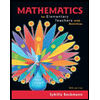 Mathematics for Elementary Teachers with Activiti...MathISBN:9780134392790Author:Beckmann, SybillaPublisher:PEARSON
Mathematics for Elementary Teachers with Activiti...MathISBN:9780134392790Author:Beckmann, SybillaPublisher:PEARSON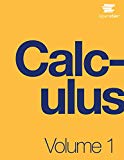
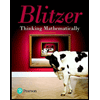 Thinking Mathematically (7th Edition)MathISBN:9780134683713Author:Robert F. BlitzerPublisher:PEARSON
Thinking Mathematically (7th Edition)MathISBN:9780134683713Author:Robert F. BlitzerPublisher:PEARSON Discrete Mathematics With ApplicationsMathISBN:9781337694193Author:EPP, Susanna S.Publisher:Cengage Learning,
Discrete Mathematics With ApplicationsMathISBN:9781337694193Author:EPP, Susanna S.Publisher:Cengage Learning,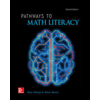 Pathways To Math Literacy (looseleaf)MathISBN:9781259985607Author:David Sobecki Professor, Brian A. MercerPublisher:McGraw-Hill Education
Pathways To Math Literacy (looseleaf)MathISBN:9781259985607Author:David Sobecki Professor, Brian A. MercerPublisher:McGraw-Hill Education

Discrete Mathematics and Its Applications ( 8th I...
Math
ISBN:9781259676512
Author:Kenneth H Rosen
Publisher:McGraw-Hill Education

Mathematics for Elementary Teachers with Activiti...
Math
ISBN:9780134392790
Author:Beckmann, Sybilla
Publisher:PEARSON


Thinking Mathematically (7th Edition)
Math
ISBN:9780134683713
Author:Robert F. Blitzer
Publisher:PEARSON

Discrete Mathematics With Applications
Math
ISBN:9781337694193
Author:EPP, Susanna S.
Publisher:Cengage Learning,

Pathways To Math Literacy (looseleaf)
Math
ISBN:9781259985607
Author:David Sobecki Professor, Brian A. Mercer
Publisher:McGraw-Hill Education
Bayes' Theorem 1: Introduction and conditional probability; Author: Dr Nic's Maths and Stats;https://www.youtube.com/watch?v=lQVkXfJ-rpU;License: Standard YouTube License, CC-BY
What is Conditional Probability | Bayes Theorem | Conditional Probability Examples & Problems; Author: ACADGILD;https://www.youtube.com/watch?v=MxOny_1y2Q4;License: Standard YouTube License, CC-BY
Bayes' Theorem of Probability With Tree Diagrams & Venn Diagrams; Author: The Organic Chemistry Tutor;https://www.youtube.com/watch?v=OByl4RJxnKA;License: Standard YouTube License, CC-BY
Bayes' Theorem - The Simplest Case; Author: Dr. Trefor Bazett;https://www.youtube.com/watch?v=XQoLVl31ZfQ;License: Standard Youtube License